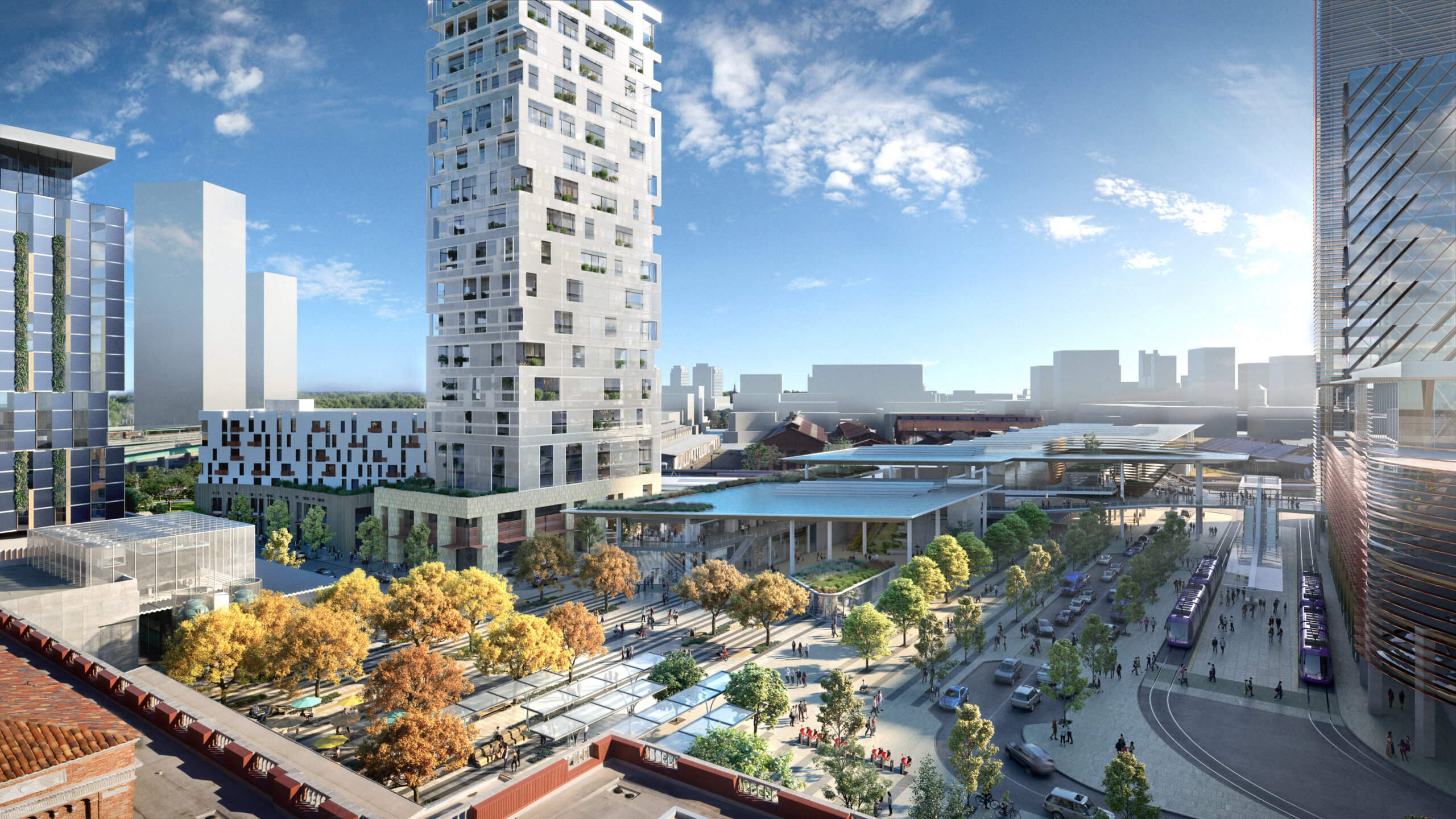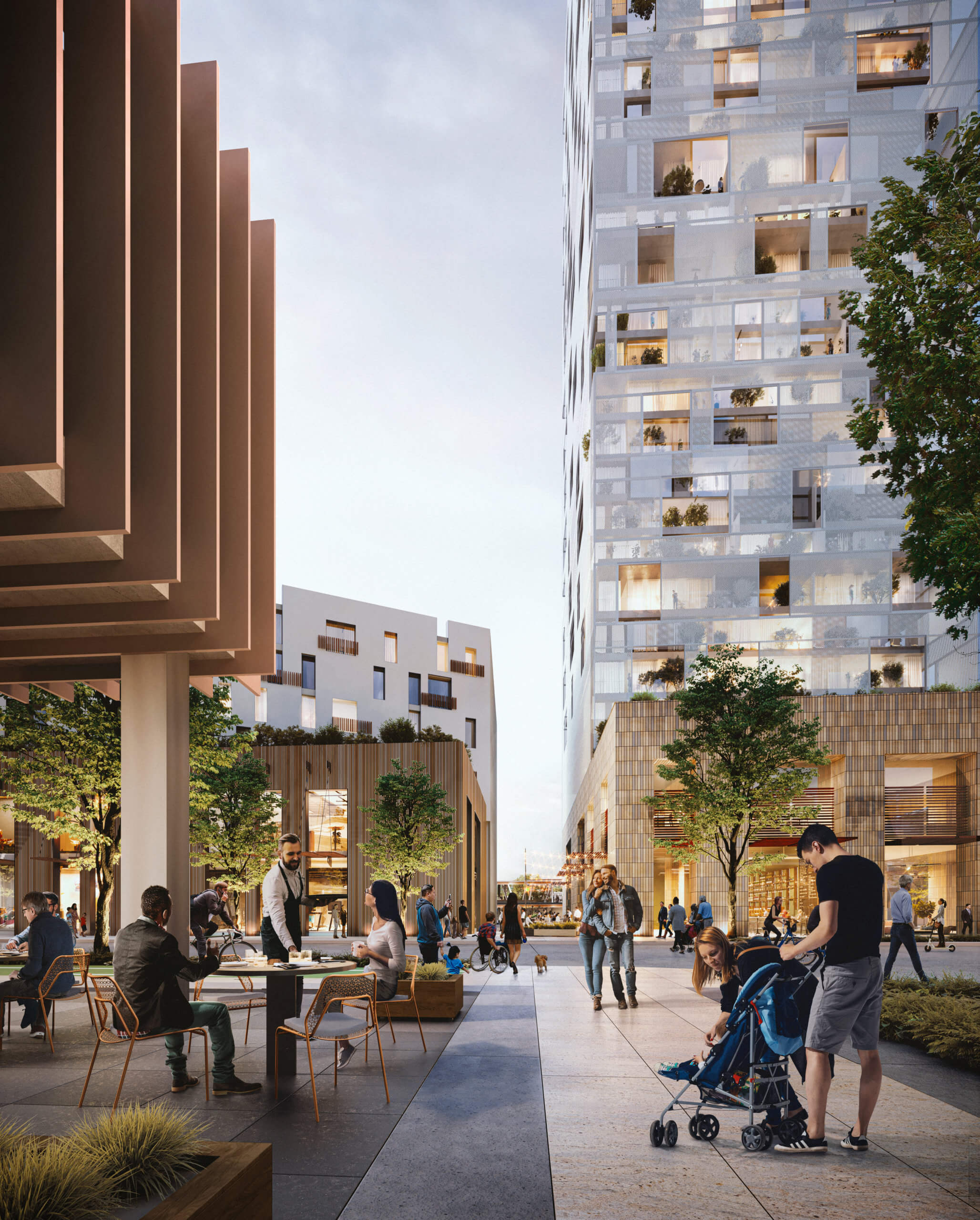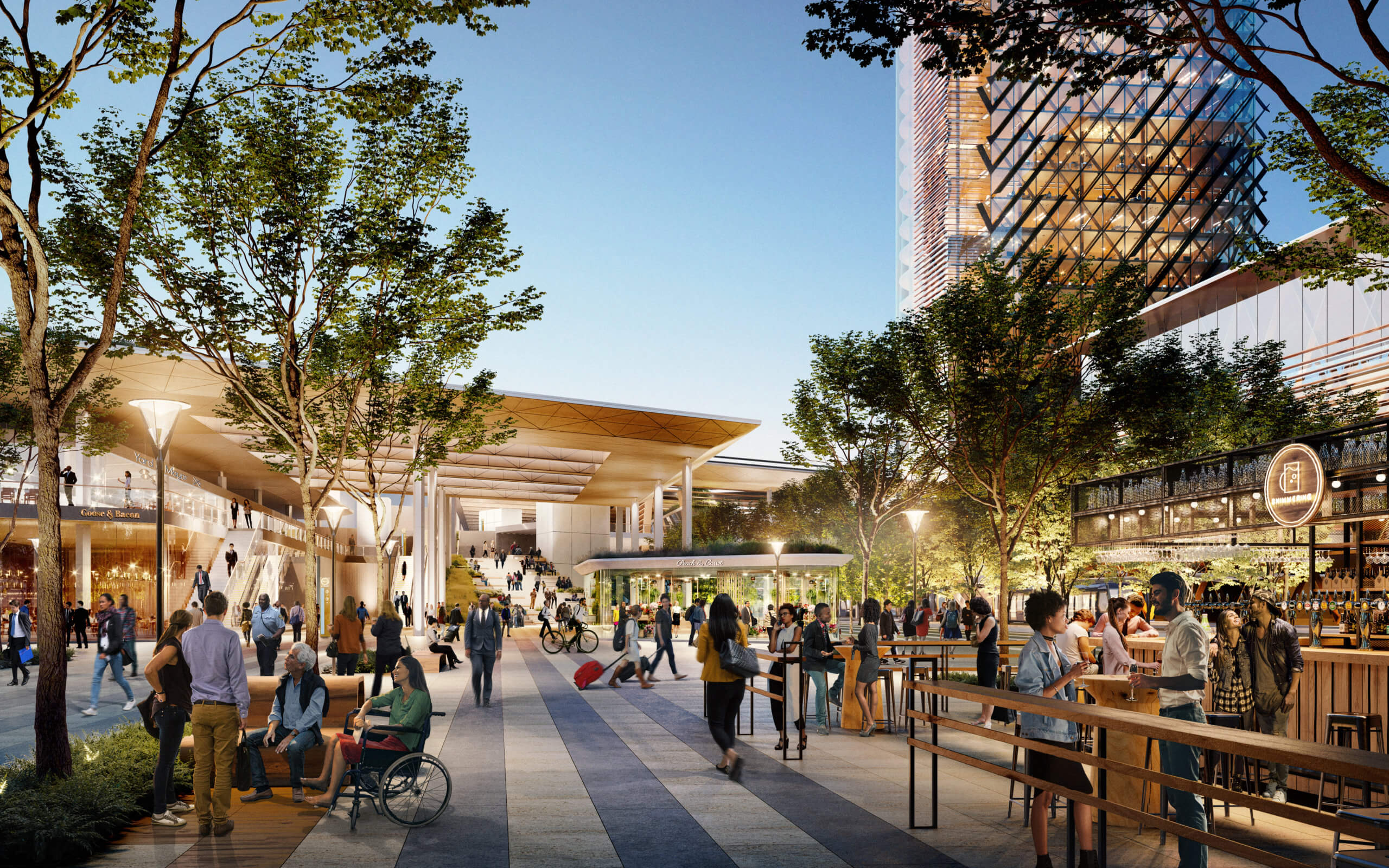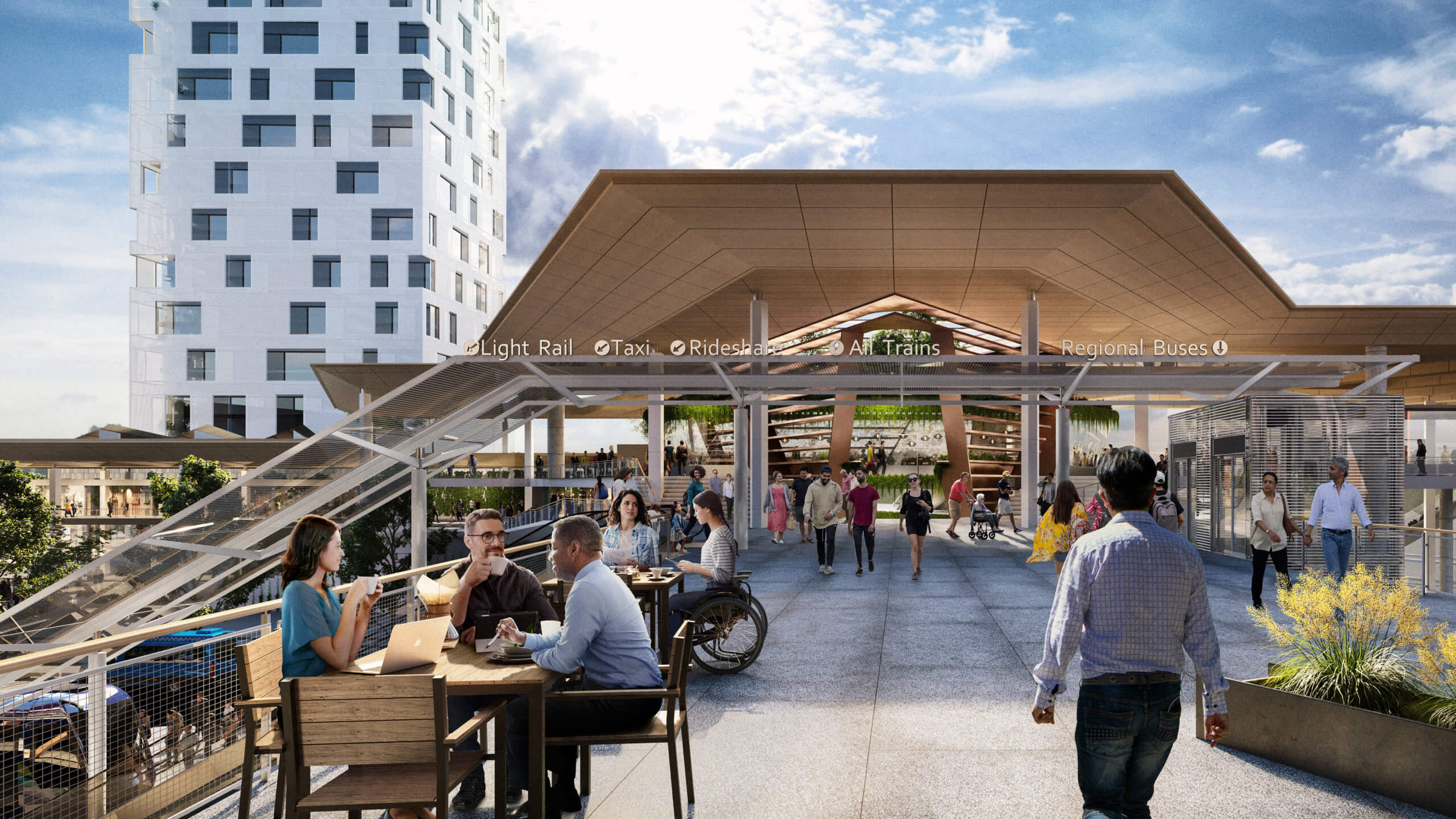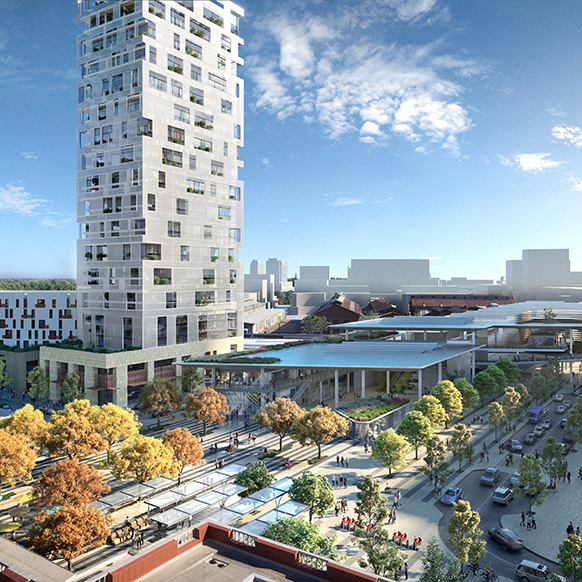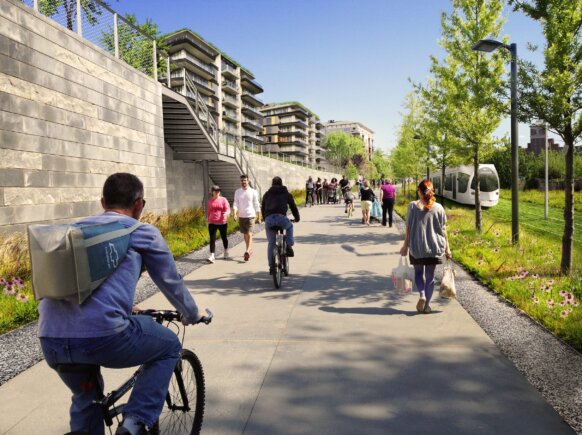A plan to make Sacramento’s historic train station one of the most sustainable public places in California has earned a coveted and rigorous certification for environmental innovation. The Living Community Challenge Vision Plan Certification, which was awarded to the Sacramento Valley Station Area Plan, bolsters Sacramento’s leadership in championing regenerative, resilient urban design. Led by the City of Sacramento and global design firm Perkins&Will, in partnership with ARUP and Grimshaw Architects, EPS and AIM Consulting, the Sacramento plan is the first of its kind to achieve this prestigious recognition.
Sacramento Valley Station Area Plan Awarded Most Aspirational Sustainability Certification
